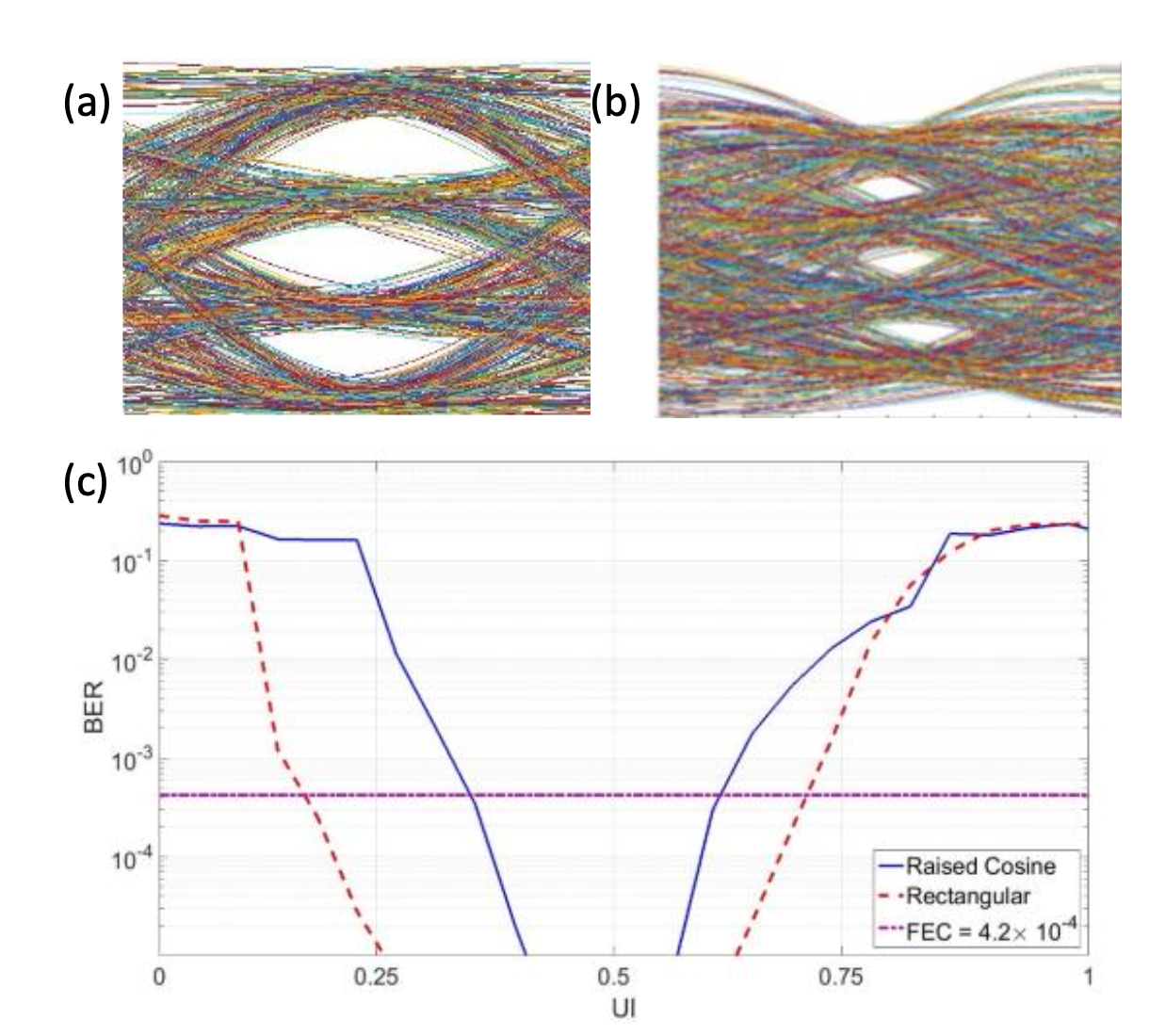This innovation cost-effectively increases data throughput in existing communications infrastructures, doubling current data rates in inexpensive vertical-cavity surface-emitting laser (VCSEL) technologies.
Achieving higher data rates in short-reach optical communications typically requires higher fiber counts that increase cost and form factor. To overcome these barriers, Georgia Tech’s innovation uses RC pulse shaping for VCSEL MMF links (e.g., four-level pulse amplitude modulation [PAM4] that have fewer fiber requirements) to enable lower bandwidth hardware components to support data rates over 100 Gbps.
RC pulse shapes are generated using low-resolution digital-to-analog converters and field-programmable gate arrays that can be easily mapped to application-specific integrated circuits in silicon carbide metal-oxide semiconductors (SiC MOS). Georgia Tech’s modulation and pulse shaping technique is supported by digital signal processing algorithms that can be applied at both the transmitter and receiver.
- Small design: Uses direct modulation and detection with VCSEL-based MMF links for small form factor
- High speeds with low cost and power: Achieves speeds of 100 Gbps and higher while maintaining low cost and low power consumption with VCSEL MMF-based links and other direct-modulated lasers
- Low bandwidth requirements: Minimizes intersymbol interference and reduces the required electrical bandwidth to enable use with commercially packaged VCSELs that have bandwidth in the low 20 GHz range
- Reduced fiber requirements: Implements equalization using 7 forward and 3 backward fiber taps that are commercially available with minimal hardware complexity
- Minimizes digital signal processor (DSP) complexity: Ensures total DSP latency is much lower than the propagation time of the signal (˜500 ns per 100 m) to reduce cost and latency
- High fidelity: Achieves error-free transmission with minimal (7%) overhead for forward error correction codes
- Optical telecommunication
- High-speed optical interconnects for data centers
- Short-reach local area networks

Eye diagram showing error-free (a) rectangular signaling at 60 Gbps and (b) RC signaling at 100 Gbps. The graph (c) shows bit error rate vs. timing error for 60-Gbps rectangular and 100-Gbps RC signaling.
